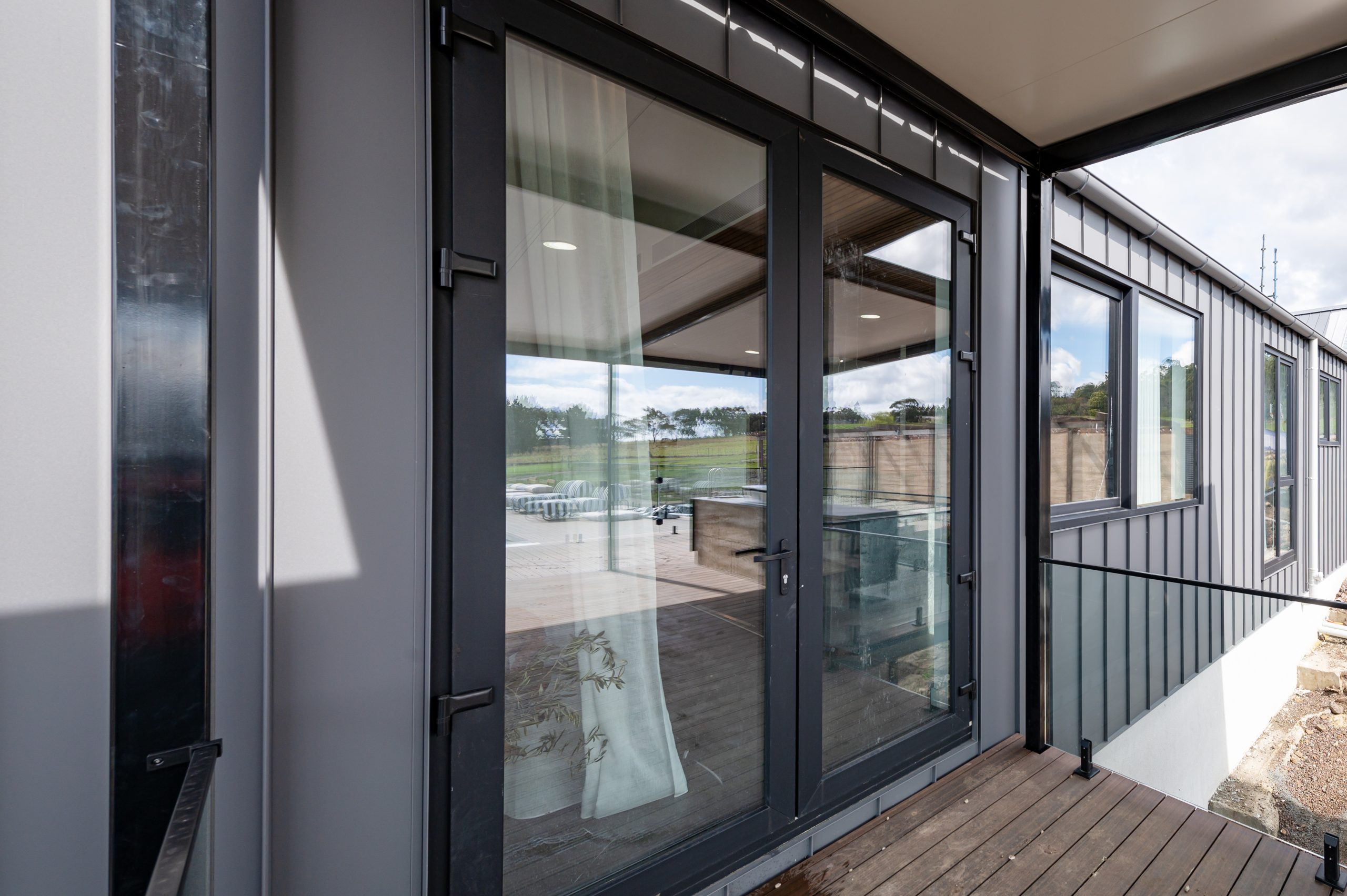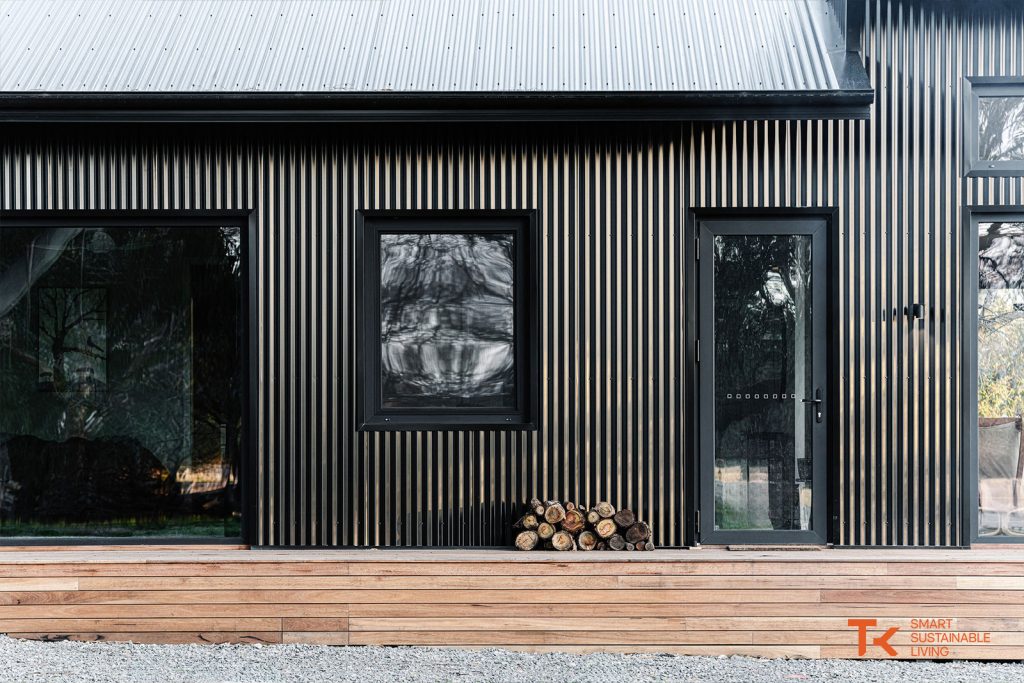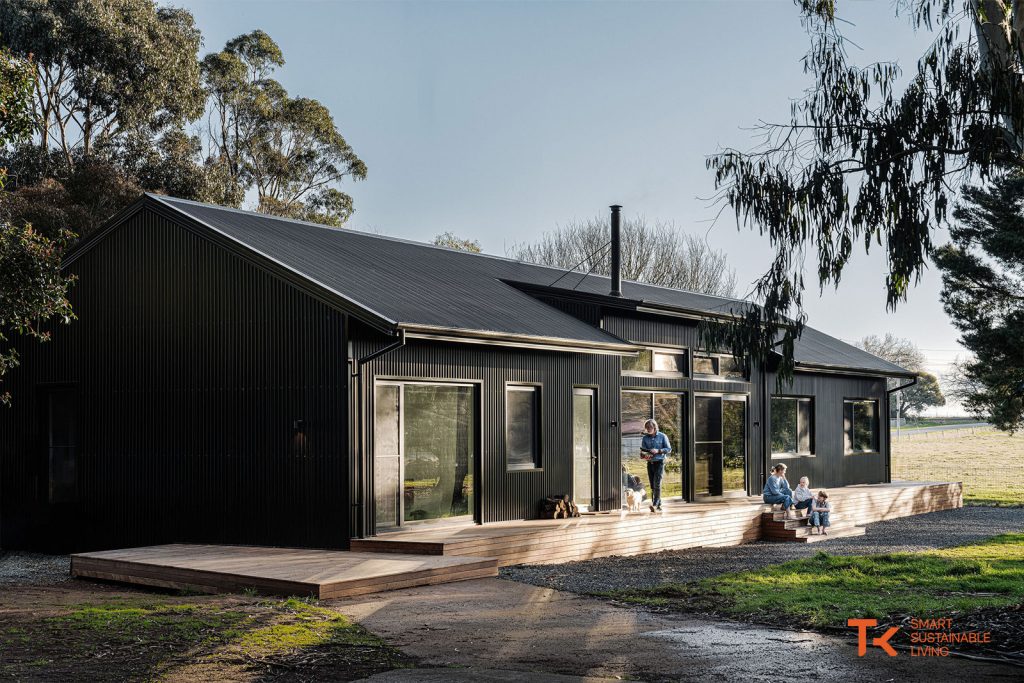Sustainability in Modular Homes

Long seen as an efficient way of delivering houses, modular homes are now emerging as a great method to make housing more sustainable.
Produced in controlled manufacturing settings, thoughtfully designed pre-built homes can also incorporate the latest sustainable materials, such as energy-efficient Thermotek window and door systems.

Breaking Ground: Thermotek Joins prefabAUS, Off-Site Construction Association
With a sustainable manufacturing facility in Melbourne, Thermotek customises world-class solutions for the local and national market, with products backed by German engineering but tailored for the Australian climate.
We recently joined prefabAUS, the peak body for Australia’s off-site construction industry.
Both Thermotek and prefabAUS are passionate about the positive role of prefabrication in transforming our built environment, such as decreasing construction timeframes and waste while increasing quality, productivity, and affordability.
This is particularly pertinent given the ongoing housing affordability crisis in Australia. We believe that making new housing as affordable and sustainable as possible promotes a healthy future for the industry.
What exactly is a modular home?
A modular home is a portable structure that has been built at an off-site facility. It is then transported to a permanent site for assembly.
While the terms prefab and modular are often used interchangeably, they aren’t exactly the same thing. Modular homes are a type of prefab that are delivered to the site in volumetric modules. This transportability means they now comprise around 80% of prefab homes.
According to reports, the global modular market is also expected to grow 50% from 2021 to 2028.
So, just what are their benefits?
1. Cost-Effectiveness
Advancements in construction technology over the past few decades mean that the cost of producing modular homes is significantly less than it used to be – and often much less than traditional onsite builds. This makes them an important weapon in fighting the housing affordability issues that Australia has been experiencing.
In addition, it means that incorporating sustainable materials may be done in a more cost-effective way. This is important given that all new residences need to achieve a 7-star NatHERs rating under the Australian National Construction Code (NCC).
2. Waste Reduction
Being assembled in a single location means that modular homes drastically reduce the need for transportation of materials and equipment – a great benefit in a geographically vast country like Australia, where logistics can significantly impact the environment and building budget.
The centralised construction process also enables precise material management, minimising waste, and promoting responsible disposal practices.

3. Enhanced Quality
Whereas the construction of traditional onsite homes may suffer from unknown site conditions and management issues, modular homes can offer a higher level of consistency in quality.
Modular home construction benefits from a controlled level of production and oversight by experienced builders and project managers working from the same song sheet. Hence, these homes often require fewer maintenance and repairs.
4. Pollution Reduction
The environmental benefits of modular homes extend beyond waste reduction.
These homes are associated with significantly lower pollution levels, primarily due to less machinery use and minimised transportation requirements.
The consolidation of construction activities into a single site dramatically reduces the overall carbon footprint of the building process.
5. Incorporation of Sustainable Materials
A key component in the eco-friendliness of modular homes is whether they also incorporate sustainable materials and passive design techniques.
Modular homes can be built to maximise natural light, facilitate natural ventilation, and harness solar heat, contributing to a drastic reduction in the need for auxiliary heating or cooling.
Harnessing the power of Thermotek’s uPVC window and door systems in a modular home can significantly enhance its sustainability.
Known for their thermal insulation and air tightness, Thermotek windows are pivotal in achieving the energy efficiency goals required of new builds in Australia. The frames are made from uPVC, which is non-conductive and has excellent insulation properties. It is also much more affordable to use than thermally broken aluminium.
6. Durability
Moreover, the durability and low maintenance requirements of Thermotek uPVC windows are an excellent value-add for modular homes.
uPVC is ‘unplasticised’ PVC. Traditional PVC – Polyvinyl chloride – is a highly flexible and insulating material used across industries. However, it is also made from 43% ethylene, a by-product of oil, which is a major factor in greenhouse gas emissions.
uPVC is much more sustainable, as no chemical plasticisers are necessary to make it. It consists of strong impact modifiers and fillers that make it hard and durable. It’s an ideal material for the construction of window and door systems in modular homes, proving resistant to knocks and requiring little maintenance.
It also gains strength when it is recycled – by up to 6% the first time. It gets stronger by an exponentially smaller amount each time it is recycled. Windows and doors can last up to 35 years. So, if the uPVC material is recycled, it could be getting stronger and stronger for over 300 years.
In short, Thermotek window and door systems are built to last, reducing the need for frequent replacements and thereby minimising waste and resource consumption.
7. Install Double or Triple Glazed Windows for Energy Efficiency and Comfort
Our double and triple-glazed windows, designed to trap layers of air between glass panes, provide superior insulation.
In summer, they prevent excessive heat from entering, while in winter, they trap warmth inside, significantly reducing energy consumption for climate control.
With an extra pane of glass and an additional insulating air gap, triple glazing can help make a building well-insulated and airtight, making it easier to maintain a comfortable indoor temperature without relying on mechanical heating or cooling systems.
This can help to reduce energy consumption for modular homes, lower heating and cooling costs, and reduce the overall carbon footprint of a building.
In addition to improving energy efficiency, triple glazing can also provide other passive design benefits, such as improved thermal comfort and natural lighting.
It can be designed for optimal solar heat gain, which can help to reduce heating costs in colder months.
In short, Thermotek window and door systems are built to last, reducing the need for frequent replacements and thereby minimising waste and resource consumption.

8. Long-Term Benefits
The advantages of integrating Thermotek’s window solutions into modular homes extend beyond immediate energy savings. Over time, these features contribute to a substantial reduction in a home’s environmental footprint and embodied emissions.
Given Australia’s diverse climate, this aspect is especially valuable, providing homeowners with comfort, efficiency, and peace of mind.
The synergy between modular homes and advanced window technologies like those offered by Thermotek makes sustainable construction more affordable for Australians.
Harnessing the power of materials like uPVC and double/triple glazed windows unlocks the possibilities of sustainable architecture, offering a blueprint for a greener, more efficient future in homebuilding.
It not only addresses the immediate needs of cost-effectiveness and quality but also embraces long-term environmental stewardship.
Start your journey with Thermotek
Thermotek is backed by German engineering but manufactured locally in Melbourne. Our fusion-welded uPVC frames with dual-sealed air chambers create excellent insulation for energy-efficient modular homes, helping them achieve the 7-star NatHERs rating now required by the National Construction Code (NCC).
Available in either double or triple glazing, with multi-point locking for excellent security, our systems exceed Australian Standards: suitable for up to BAL 40 (bushfire rating). They are also rated between Uw 1.2 to 1.9 (WERS) for energy efficiency.
If you’re looking for beautifully made, energy-efficient window and door systems for modular homes, contact us today for more information.

